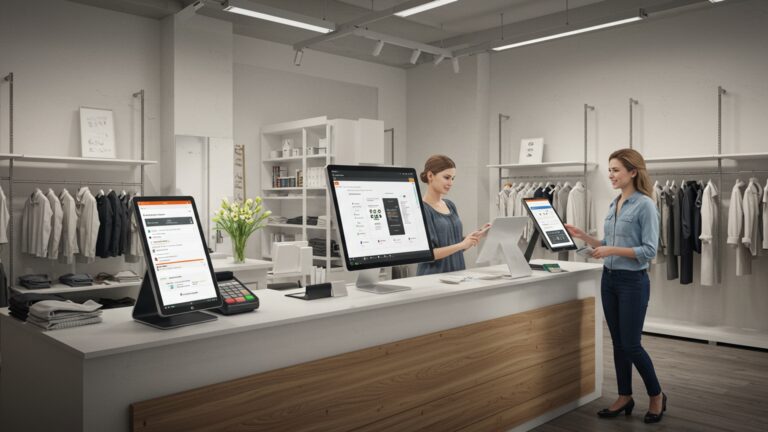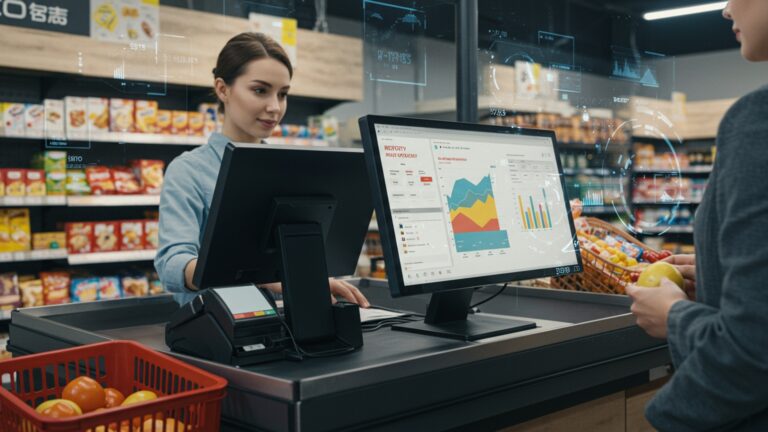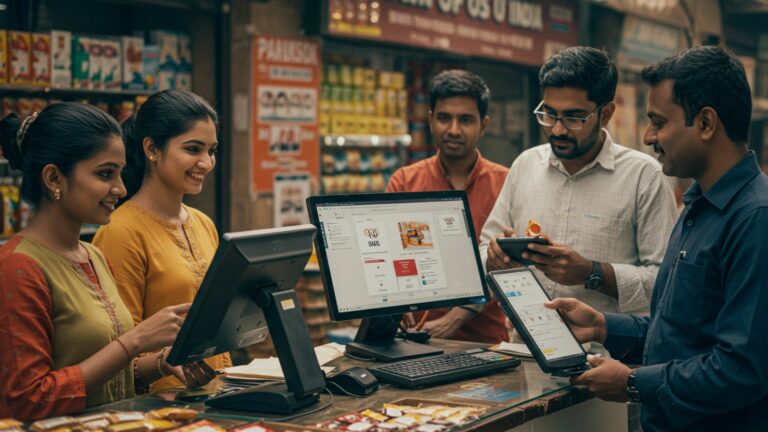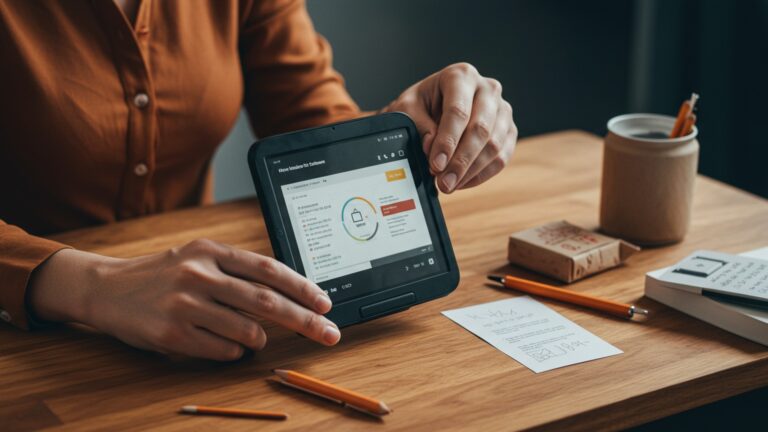How to Select the Perfect POS Billing Software for Your Business
In today’s rapidly evolving retail landscape, selecting the optimal pos billing software is no longer a mere operational decision but a strategic imperative for business longevity. Modern enterprises, from bustling pop-up shops integrating mobile payment solutions to multi-branch chains managing complex omnichannel sales, demand more than just transaction processing. The right system now acts as a central intelligence hub, offering real-time inventory management, predictive analytics for demand forecasting. seamless CRM integration to personalize customer experiences. Leveraging cloud-based platforms and AI-driven insights, forward-thinking businesses transform raw sales data into actionable strategies, minimizing human error and enhancing operational efficiency in an increasingly digital-first economy.

Understanding the Core of POS Billing Software
In today’s fast-paced business environment, efficient transaction processing and accurate record-keeping are not just advantages. necessities. At the heart of this operational efficiency lies pos billing software. A Point of Sale (POS) system, at its core, is the place where your customer makes a payment for products or services. More specifically, POS billing software is the digital brain that manages these transactions, going far beyond simple cash registers to integrate sales, inventory, customer data. reporting into one cohesive system.
Historically, businesses relied on manual ledgers and standalone cash registers. The advent of digital technology brought us electronic cash registers. these still lacked integration. Modern pos billing software represents a monumental leap, transforming the checkout process into a data-rich interaction. It’s no longer just about ringing up sales; it’s about capturing vital business intelligence that can drive growth, improve customer satisfaction. streamline operations. For any business aiming for scalability and competitive edge, understanding and leveraging the right POS solution is paramount.
Essential Features to Prioritize in Your POS Billing Software
When embarking on the journey to select the perfect pos billing software, the sheer volume of features can be overwhelming. But, focusing on a core set of functionalities that directly impact your business operations is crucial. Here’s a breakdown of the most critical features:
- Sales and Transaction Management
- Inventory Management
- Customer Relationship Management (CRM)
- Reporting and Analytics
- Employee Management
- Integrations
- Payment Gateways
- E-commerce Platforms
- Accounting Software
- Security
- Scalability
- User Interface (UI) and Ease of Use
This is the bread and butter of any POS. Look for intuitive interfaces for quick product lookups, barcode scanning, discount application, split tenders, returns, exchanges. diverse payment processing options (cash, credit/debit cards, mobile payments, gift cards). The ability to handle various transaction types smoothly is non-negotiable.
Effective inventory control prevents stockouts and overstocking. Your chosen pos billing software should offer real-time inventory tracking, automatic stock level alerts, vendor management, purchase order generation. the ability to manage variations (size, color) and bundles. For instance, a small boutique owner I know significantly reduced their dead stock by implementing a POS system that provided granular insights into slow-moving items, allowing them to adjust purchasing strategies.
Building customer loyalty is key. A good POS system will allow you to capture customer data, track purchase history, manage loyalty programs. even send targeted promotions. This helps personalize the customer experience and foster repeat business.
This is where raw transaction data transforms into actionable insights. Look for robust reporting capabilities on sales performance (by product, employee, time of day), inventory turnover, customer demographics. profit margins. Customizable reports and intuitive dashboards are invaluable for strategic decision-making.
Track employee sales performance, manage shifts. monitor clock-ins/outs directly through the POS. Some advanced systems even integrate payroll data, simplifying administrative tasks.
The true power of modern pos billing software often lies in its ability to integrate seamlessly with other business critical systems.
Compatibility with various payment processors (e. g. , Stripe, Square, PayPal) is essential for flexible payment options.
If you have an online store, ensure the POS can sync inventory and sales data with platforms like Shopify or WooCommerce to maintain consistency across channels.
Integration with tools like QuickBooks, Xero, or Sage can automate financial data entry, significantly reducing manual errors and saving accounting time.
Protecting sensitive customer and business data is paramount. Ensure the software offers strong data encryption, PCI DSS compliance for card payments, user access controls. regular data backups.
Your business will grow. your POS should grow with it. Consider if the software can handle increased transaction volumes, additional locations. new features as your needs evolve.
A complicated system will slow down operations and frustrate staff. Opt for a system with an intuitive, user-friendly interface that requires minimal training. This directly impacts operational efficiency and staff satisfaction.
Deployment Models: On-Premise vs. Cloud-Based POS Billing Software
One of the foundational decisions you’ll make when choosing pos billing software is whether to opt for an on-premise or cloud-based solution. Each model has distinct advantages and disadvantages that cater to different business needs and technical capabilities.
- On-Premise POS
- Cloud-Based POS (SaaS – Software as a Service)
In this model, the software is installed and runs directly on your local servers and computers within your business premises. You own the software license. your IT team or a contracted specialist is responsible for maintenance, updates. data security.
This model operates over the internet. The software and your data are hosted on the vendor’s remote servers. you access it via a web browser or dedicated app. You typically pay a recurring subscription fee for its use.
Here’s a comparison to help you weigh your options:
| Feature | On-Premise POS Billing Software | Cloud-Based POS Billing Software |
|---|---|---|
| Cost Structure | Higher upfront cost (license, hardware, setup). Lower ongoing subscription fees (mostly maintenance). | Lower upfront cost (minimal hardware). Higher ongoing subscription fees. |
| Accessibility | Limited to local network, potentially requiring VPN for remote access. | Accessible from anywhere with internet connection (PC, tablet, smartphone). |
| Data Ownership & Control | Full control over data, stored on your servers. | Data hosted by vendor; ownership is typically yours. control is through vendor’s infrastructure. |
| Maintenance & Updates | Managed by your IT team; requires manual updates and backups. | Managed by vendor; automatic updates and backups. |
| Security | Your responsibility; dependent on your internal IT security measures. | Vendor’s responsibility; typically high-grade security and redundancy. |
| Scalability | Requires upgrading local hardware and infrastructure. | Easily scalable; vendor handles infrastructure changes. |
| Offline Capability | Generally good, as it runs locally. | Requires internet connection; some offer limited offline mode with data sync. |
For a small cafe like “The Daily Grind” with limited IT resources, a cloud-based pos billing software proved ideal. They could manage orders from tablets, access sales reports from home. didn’t have to worry about server maintenance. Conversely, a large supermarket chain might prefer an on-premise solution for maximum control over their vast datasets and specific integration requirements with legacy systems.
Industry-Specific Considerations for POS Billing Software
The ‘perfect’ pos billing software isn’t a one-size-fits-all solution. Different industries have unique operational workflows and regulatory requirements that demand specialized features. Understanding these nuances is key to making an informed decision.
- Retail (Fashion, Electronics, Grocery)
- Fashion
- Electronics
- Grocery
- Restaurants and Cafes
- Table management, kitchen display system (KDS) integration, order customization (add-ons, modifiers), tip management, split checks. online ordering integration are vital. Many restaurant-specific pos billing software solutions also offer handheld devices for tableside ordering.
- A great example is a bustling downtown bistro that implemented a POS system with KDS. Orders sent from the front of house immediately appear on screens in the kitchen, reducing miscommunications and speeding up food preparation, leading to higher customer satisfaction and table turnover.
- Service Businesses (Salons, Spas, Gyms)
- Appointment scheduling, staff scheduling, client management with service history, recurring billing for memberships. gift certificate management are crucial.
- For a salon, the ability to track client preferences, past services. product purchases through the pos billing software allows stylists to offer highly personalized recommendations, enhancing client loyalty.
- Healthcare (Pharmacies)
- Prescription management, compliance with healthcare regulations (e. g. , HIPAA in the US), integration with insurance billing. robust inventory control for controlled substances are paramount. Security and accuracy are non-negotiable in this sector.
Needs robust inventory management for sizes, colors, styles; customer loyalty programs; easy returns/exchanges; and potentially integration with e-commerce platforms like Shopify or WooCommerce for omnichannel sales.
Serial number tracking, warranty management, repair tracking. detailed product specifications are often critical.
Fast checkout, scale integration for weighed items, robust perishable inventory management. integration with loyalty cards are essential. My friend, who runs a local organic grocery store, switched to a POS that integrated directly with their digital scales, eliminating manual entry errors and speeding up checkout lines during peak hours.
Evaluating Vendors and Support: Beyond the Software
The software itself is only one part of the equation. The vendor behind the pos billing software and the support they offer are equally critical for long-term success. A fantastic product can become a nightmare without adequate support.
- Reputation and Reviews
- Customer Support Availability and Quality
- Availability
- Quality
- Training and Onboarding
- Pricing Models
- Subscription-based
- One-time purchase
- Per-terminal/user
- Hidden Fees
Before committing, research the vendor’s reputation. Look for reviews on independent platforms (e. g. , Capterra, G2, Trustpilot), industry forums. social media. Pay attention to consistent complaints regarding customer service, bugs, or hidden fees. Speaking with other businesses in your industry who use the software can provide invaluable insights.
Does the vendor offer 24/7 support, or are they only available during business hours? What channels do they offer (phone, email, live chat, knowledge base)? For businesses operating outside standard hours, 24/7 support is often essential.
Test their support before you buy. Send a pre-sales query and evaluate response times and the helpfulness of their agents. Ask about their average resolution time for issues.
A new POS system can be a significant change for your team. Inquire about the training resources provided. Do they offer live webinars, video tutorials, in-person training (if applicable), or a dedicated onboarding specialist? Comprehensive training ensures a smoother transition and quicker adoption by your staff.
comprehend the total cost of ownership (TCO).
Common for cloud POS. Monthly or annual fees.
Typical for on-premise solutions. often includes annual maintenance fees.
Cost varies based on the number of terminals or users.
Be wary of additional costs for payment processing, integrations, advanced features, or specific support tiers. Always get a clear, itemized quote.
// Example of a pricing inquiry checklist What is the base monthly/annual fee? Are there additional fees per user or terminal? What are the payment processing rates? Are they fixed or variable? Are there extra costs for specific integrations (e. g. , accounting, e-commerce)? What support tiers are available. what do they cost? Is hardware included or purchased separately?
A transparent pricing structure is a strong indicator of a trustworthy vendor. Always read the fine print.
Seamless Implementation and Transition Strategies
Migrating to a new pos billing software can seem daunting. with a well-planned strategy, it can be a smooth and beneficial process. Proper implementation ensures minimal disruption to your business operations.
- Data Migration
This is often the most critical and complex step. You’ll need to transfer existing product data (SKUs, prices, descriptions), customer details. potentially historical sales data into the new system. Work closely with your vendor to interpret their data import capabilities. Many systems offer CSV import tools.
// Example of data export/import considerations Exporting existing product data from old system (e. g. , CSV, Excel) Mapping old data fields to new POS fields Cleaning data for accuracy and consistency Testing data import with a small batch first
Ensure your existing hardware (barcode scanners, receipt printers, cash drawers, card readers) is compatible with the new pos billing software. If not, factor in the cost and time for new hardware procurement and setup. Many modern cloud POS systems are designed to work with off-the-shelf hardware, reducing specialized equipment needs.
Your team will be the primary users of the new system. Allocate sufficient time for comprehensive training. Hands-on practice, role-playing scenarios. a clear understanding of the ‘why’ behind the change will accelerate adoption. Designate internal ‘super-users’ who can assist colleagues with minor issues.
Avoid a “big bang” approach. Consider a phased rollout where possible, perhaps starting with one terminal or department. Conduct thorough testing of all core functionalities – sales, returns, inventory adjustments. reporting – before going fully live. This helps identify and resolve issues in a controlled environment. A business I consulted with decided to run their old and new POS systems simultaneously for a week, using the new one for non-critical transactions, which allowed their staff to get comfortable without the pressure of live sales.
Conclusion
Selecting the perfect POS billing software is not merely a technical decision; it’s a strategic investment in your business’s future. My personal tip is to always conduct a pilot run, even if it’s just for a week. I once saw a small bookstore owner, eager to modernize, nearly commit to a system that, while feature-rich, struggled with their unique inventory tagging – an issue only discovered during a real-world trial. This experience highlighted the crucial need to test software with your actual products and workflows, mirroring current trends towards practical, user-centric evaluations. The right software, especially one with seamless cloud integration, like those discussed in How to Set Up Cloud Based POS Software for Business Growth, allows for remote management and real-time data access, crucial in today’s dynamic market. Look beyond basic billing; consider its capability to adapt to emerging technologies, such as integrating with loyalty programs or supporting mobile payments, which are vital for enhancing customer experience. By carefully evaluating scalability, user-friendliness. comprehensive support, you’re not just buying software; you’re empowering your business to efficiently manage operations, delight customers. confidently navigate the future.
More Articles
How to Set Up Cloud Based POS Software for Business Growth
How to Choose and Implement POS Software for Retail Success
How to Master POS Billing Software for Efficient Retail Operations
How to Choose the Best Mobile POS Software for Your Business
How to Choose the Best Restaurant POS Software for Your Business
FAQs
Where do I even start when looking for POS software?
Begin by figuring out what your business really needs. Think about your store type (retail, restaurant?) , how many items you sell, if you need inventory tracking, employee management, or customer loyalty programs. Make a list of your absolute must-haves and your nice-to-haves.
Should I go for cloud-based or traditional on-premise POS?
Cloud-based POS (SaaS) is generally more flexible, accessible from anywhere. often has lower upfront costs with monthly subscriptions. Updates are automatic. On-premise means you own the software, control your data locally. it requires more IT management and a higher initial investment. For most modern businesses, cloud is the way to go.
What are the absolute essential features I should look for?
Beyond basic billing, definitely look for robust inventory management, detailed sales reporting and analytics, customer relationship management (CRM) tools. integration capabilities with other software you use (like accounting or e-commerce). Employee management and multi-store support might also be crucial depending on your business size.
How much does POS software typically cost. are there hidden fees?
Costs vary a lot! You’ll usually encounter subscription fees (monthly/annually) for cloud solutions, or a one-time license fee for on-premise. Don’t forget to factor in hardware costs (scanner, printer, tablet), payment processing fees, setup fees. potential costs for extra features, training, or ongoing support. Always ask for a clear, itemized breakdown.
Is it easy for my staff to learn and use the software?
User-friendliness is super essential. A complex system can slow down operations and frustrate employees. Look for intuitive interfaces, easy navigation. clear workflows. Ask about training resources provided by the vendor, like tutorials, documentation, or live training sessions. A free trial can help you test this out before committing.
What kind of customer support should I expect?
Good support is crucial, especially when things go wrong during busy hours. Check what support channels are available (phone, email, chat), their hours of operation. typical response times. Read reviews about their support quality – reliable and responsive help can save you a lot of headaches and downtime.
Can this software grow with my business down the road?
Absolutely! Choose a system that’s scalable. If you plan to open more locations, add more product lines, or expand your online presence, ensure the POS can handle increased volume and offers features like multi-store management, additional user accounts, or e-commerce integrations without requiring a complete overhaul in the future.






